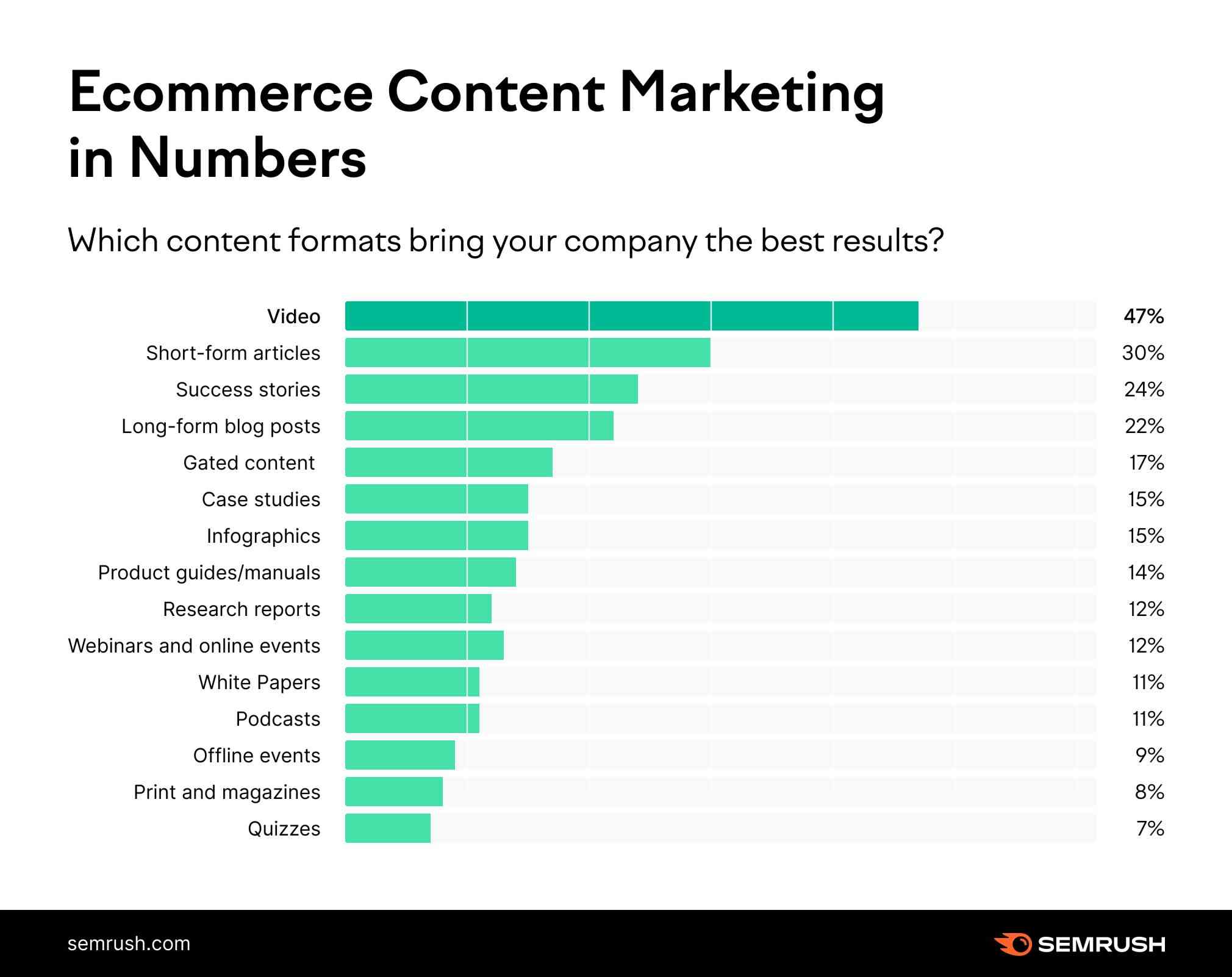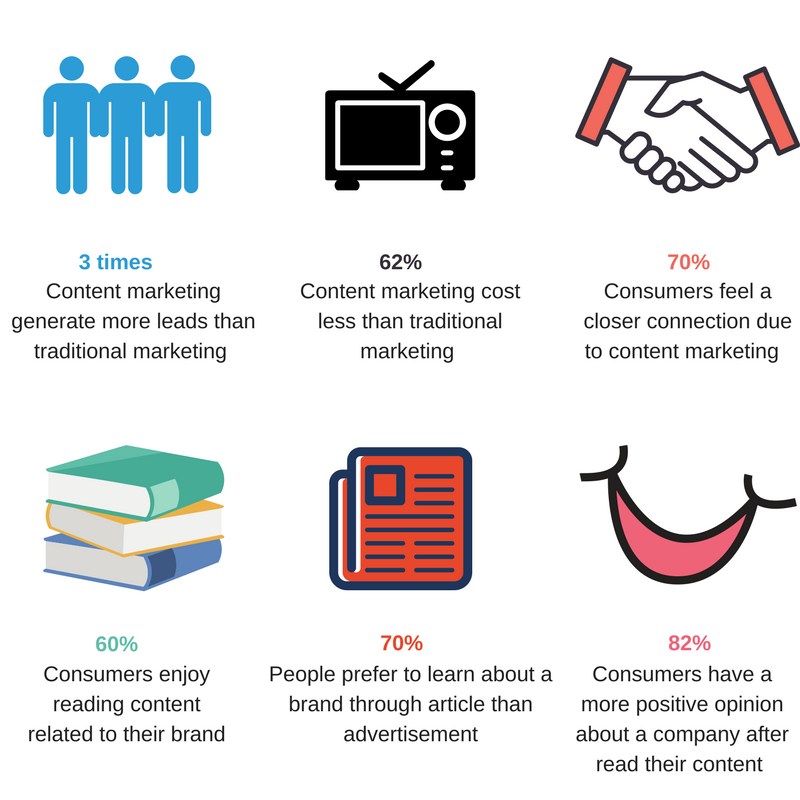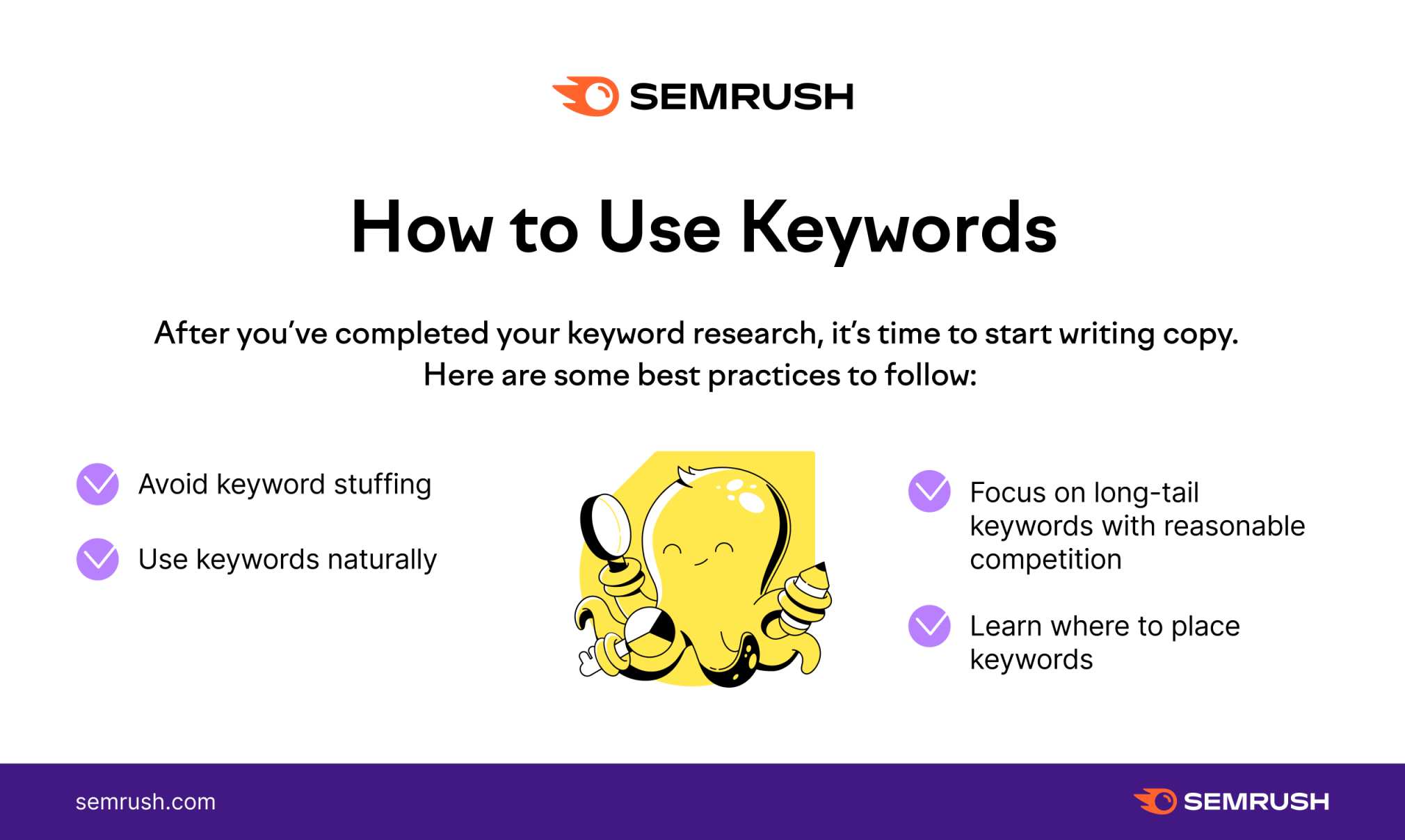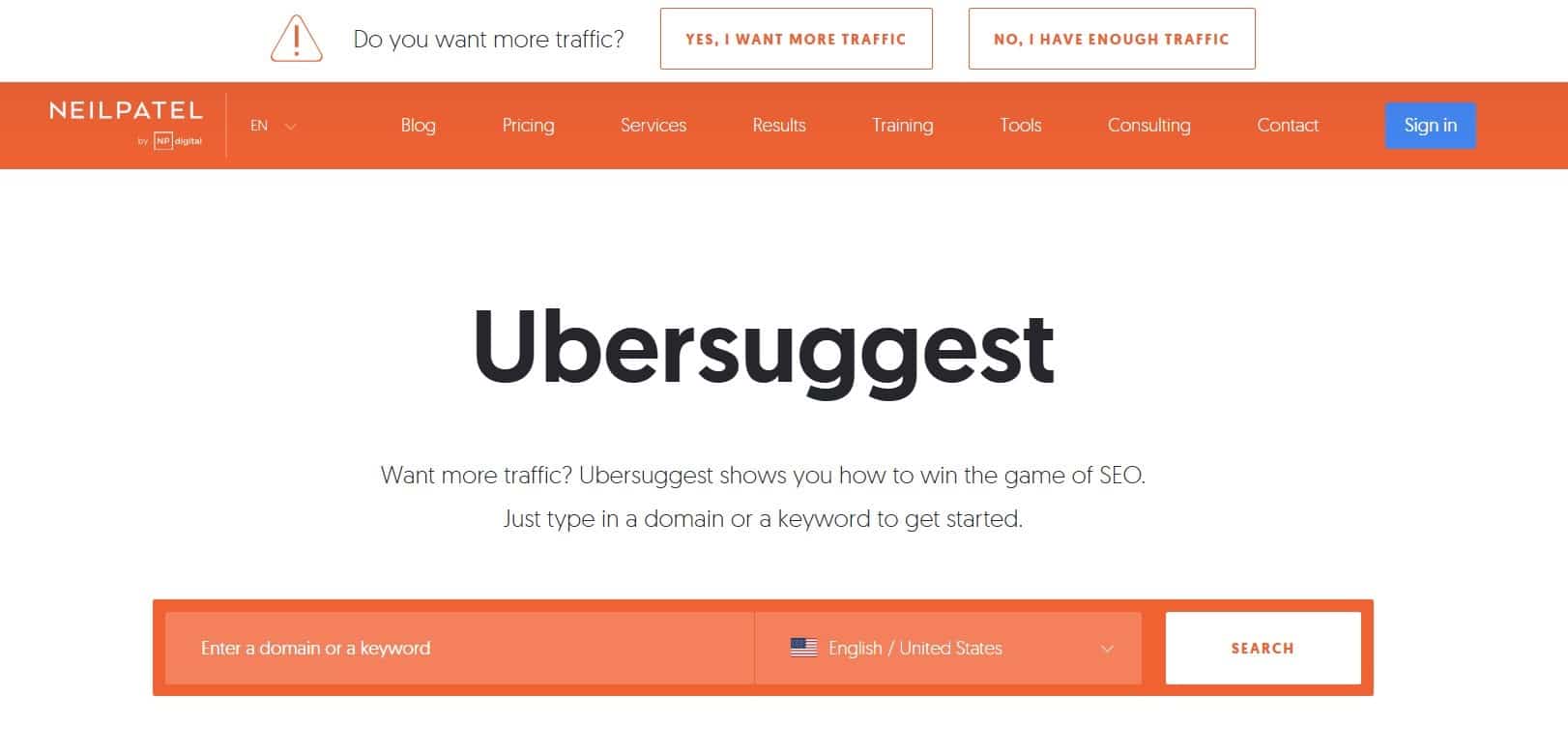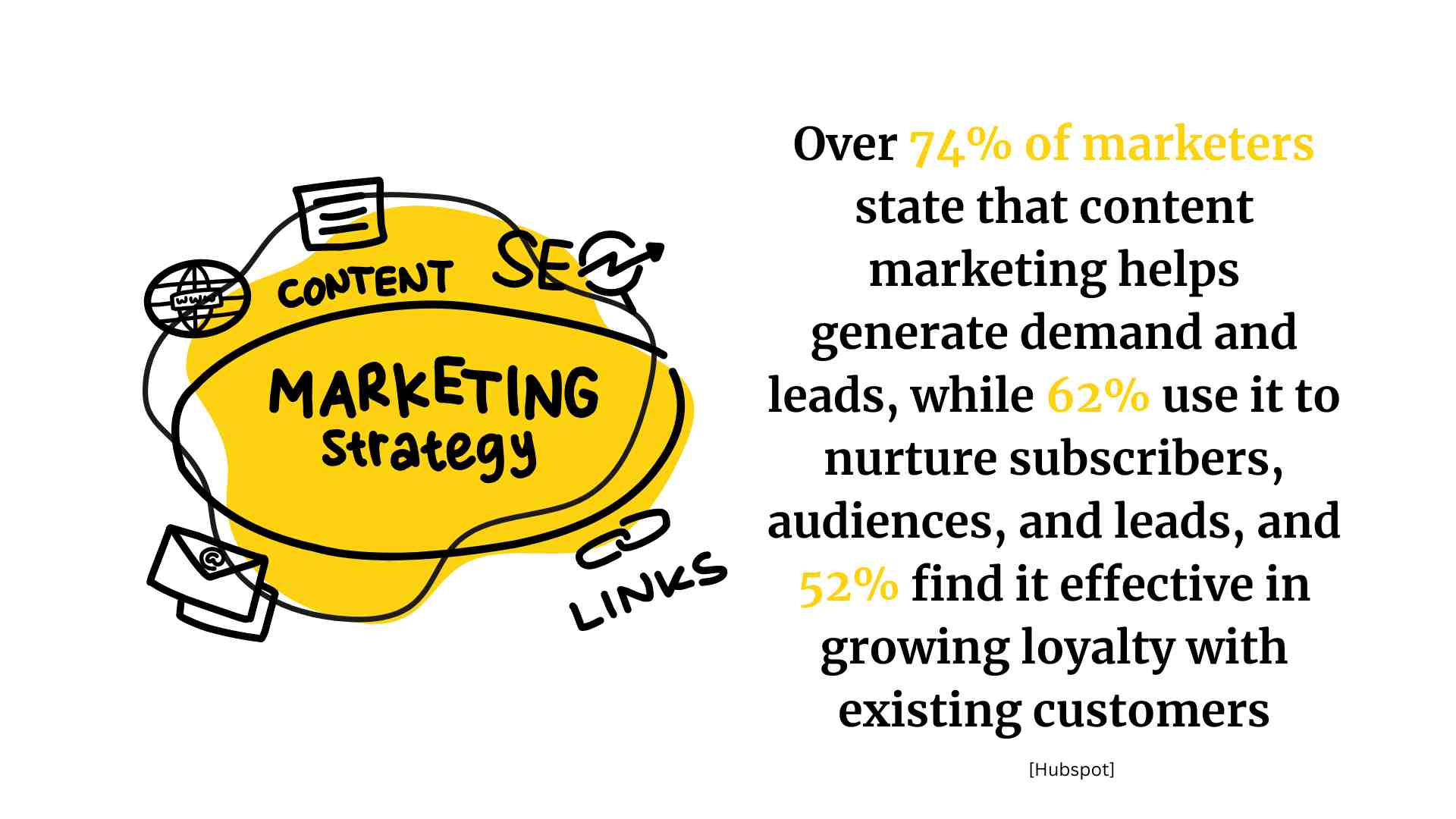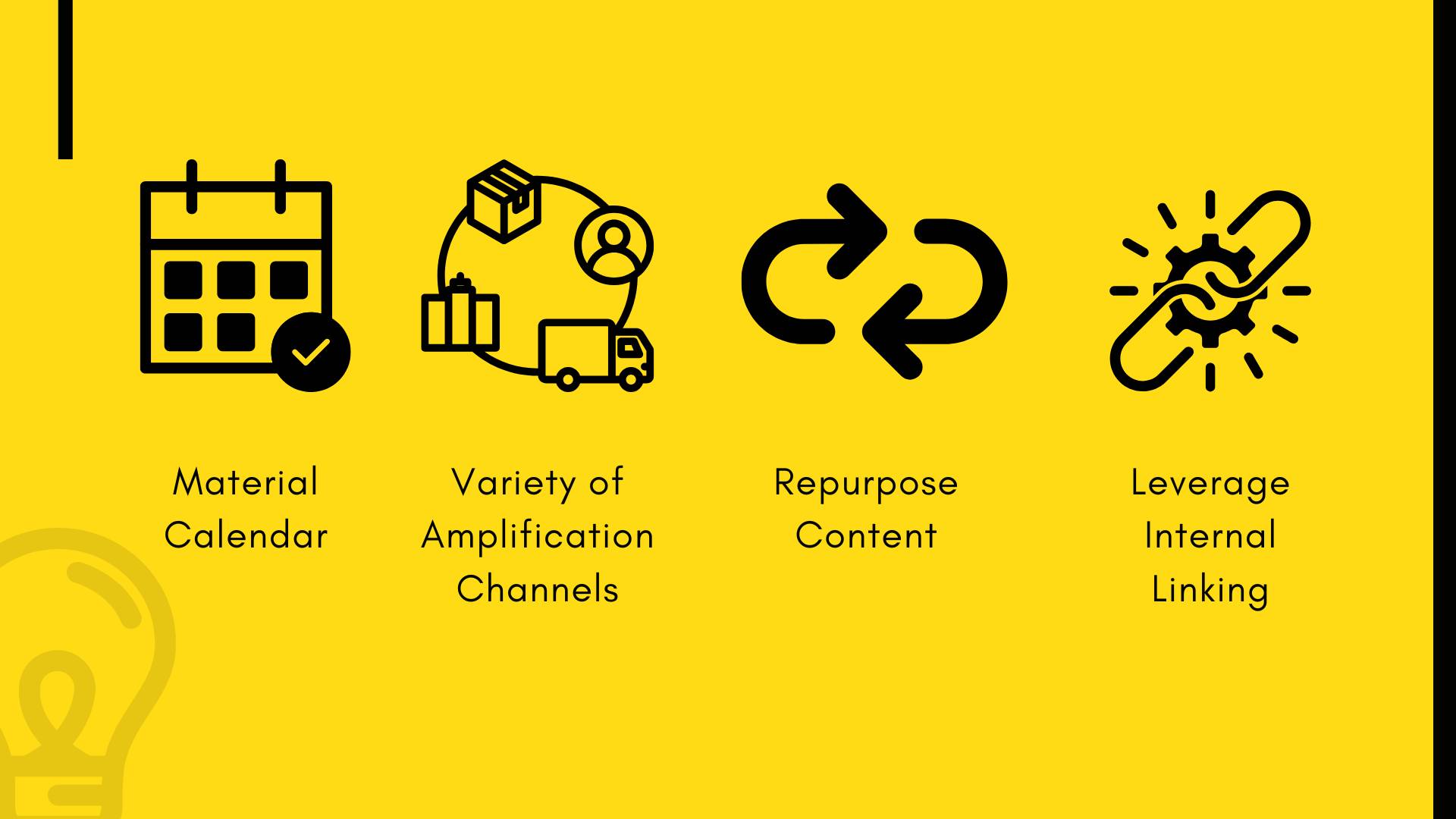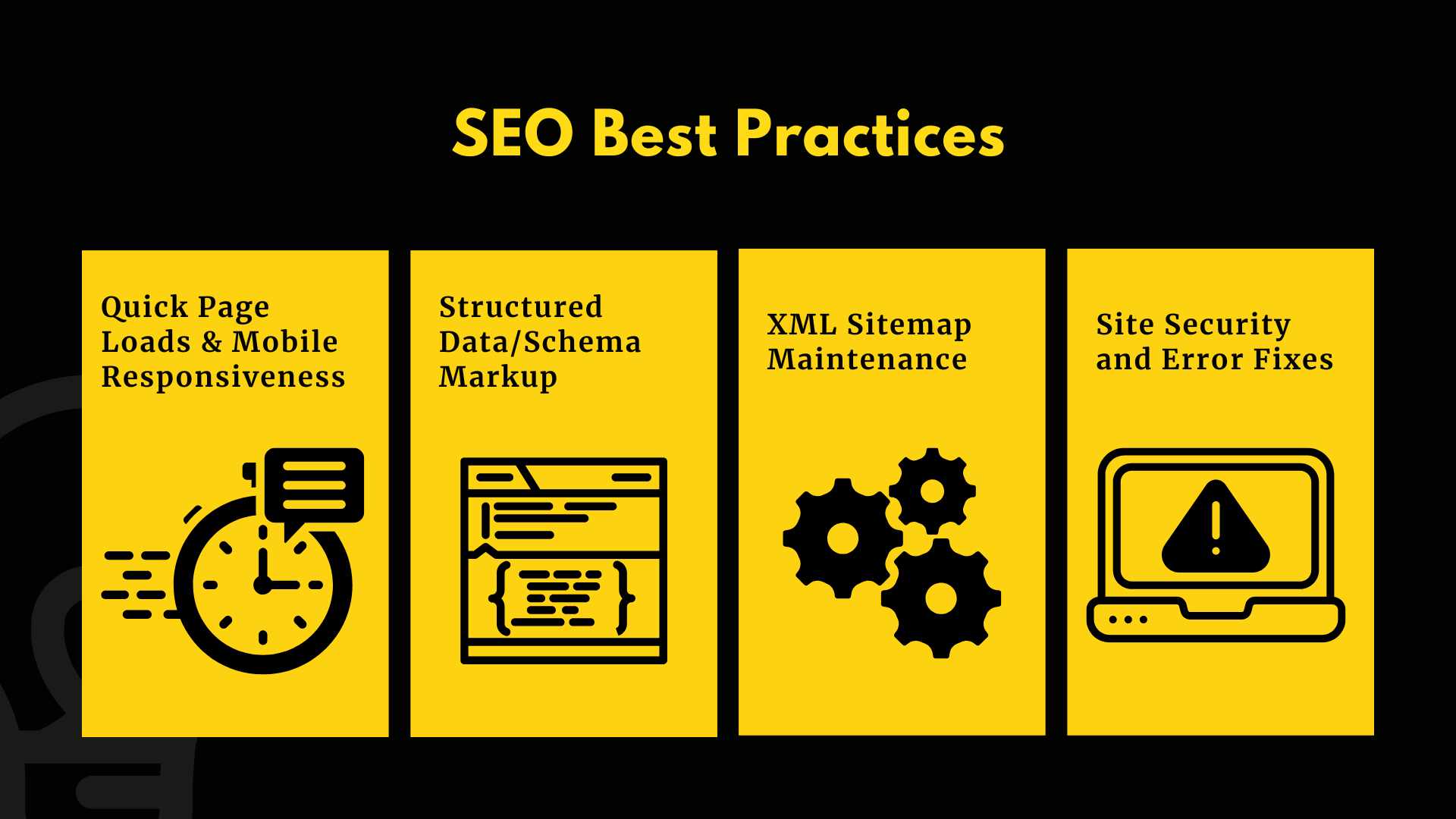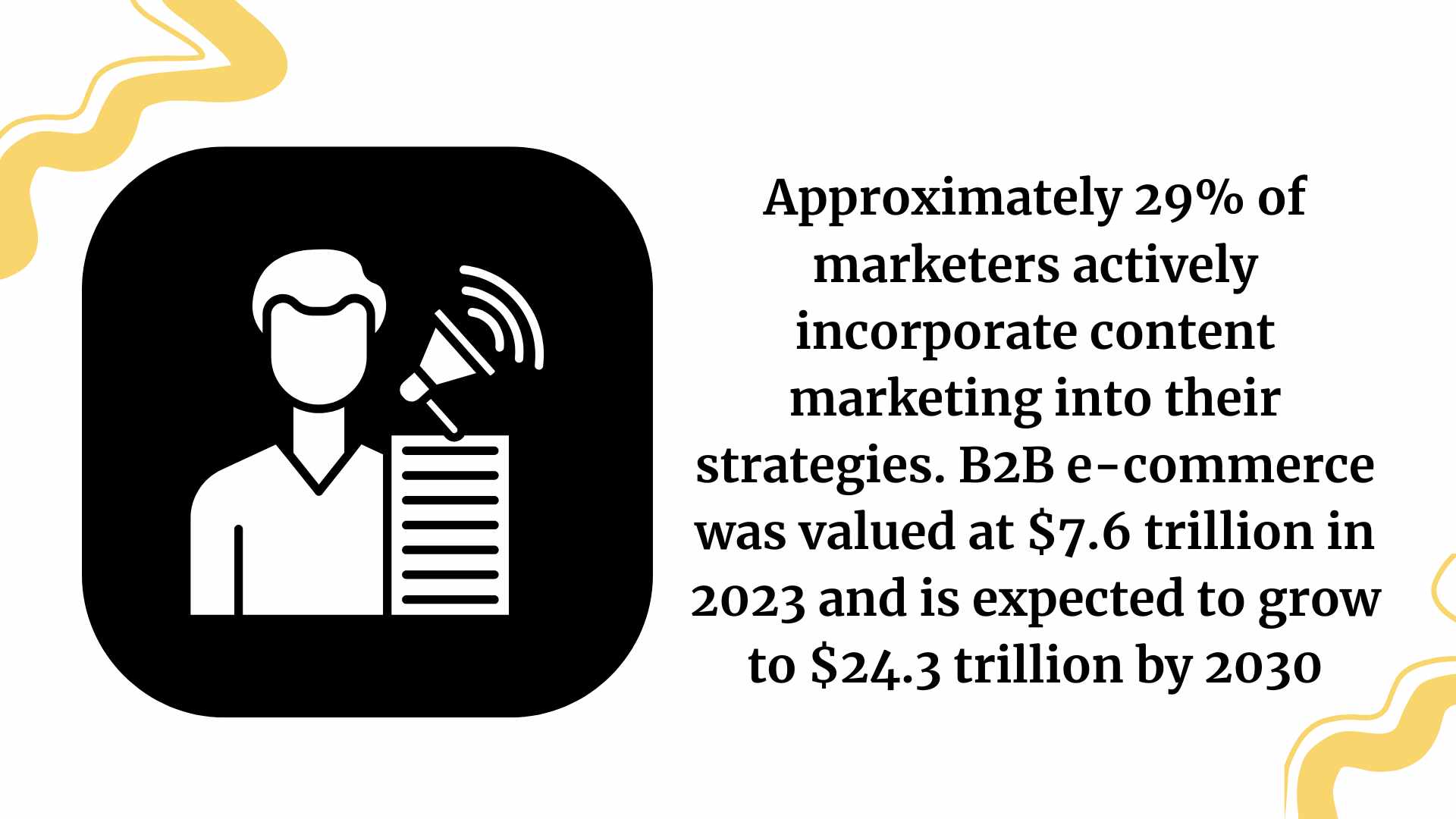Imagine if your product could talk! Content marketing gives it a strong, convincing, and search engine optimization-friendly voice. Without a content plan, operating an online store is like throwing a party without sending out invitations.
Thus, content marketing is more than simply the icing on the cake!! It’s the batter, the oven, and the whole damn cake!
Do you think selling online is just about listing products and waiting for them to sell? Well, then bless your digital heart. In today’s wild web of attention spans shorter than a TikTok video, your e-commerce brand needs more than great products.
Interestingly, 83% of marketers think that the best way to generate demand is through content marketing. [Source: digitalsilk.com]
You need a content marketing strategy that doesn’t just sell, but educates, and sticks glitter on a craft table. Let’s unwrap the must-haves of a content marketing strategy for e-commerce that actually converts! Ready to turn browsers into buyers and content into cash flow? Let’s do it!
At A Glance: Content Marketing Strategy For E-commerce
- Perform In-Depth Keyword Research
- Optimize E-commerce Site Architecture
- Develop High-Quality, SEO-Optimized Content
- Build and Manage Content Distribution and Promotion
- Implement Technical SEO Best Practices
- Build High-Quality Backlinks
- Measure, Analyze, and Refine Strategy
➜ Relatable Read: The Future of Content Marketing World
Understanding E-commerce Content Marketing
E-commerce content marketing is the process of producing and sharing valuable and relevant information to draw in and involve online shoppers. It influences their decisions to buy while building brand loyalty and trust.
E-commerce content marketers create and share materials like blogs, videos, product manuals, and social media postings.
They do these to:
- Meet customer demands
- Offer answers
- improve the shopping experience
Key characteristics:
- The shopping process is skillfully connected with content.
- Helps clients in making choices from the time of discovery until the time of purchase.
- Uses blog posts, videos, product descriptions, social media, and user-generated content.
- Delivering pertinent material needs personalization.
Why is E-commerce Marketing Important?
E-commerce marketing is important for brands. As it broadens their consumer base, draws in niche markets, boosts conversion rates, and cultivates a sense of loyalty. In a fiercely competitive digital world, it offers quantifiable advantages.
It also delivers significant customer connection that traditional marketing frequently lacks.
By 2026, the worldwide content marketing market is expected to have grown by about 70% from its 2022 valuation of about $63 billion to $107 billion.
Some benefits include:
- Increased Brand Loyalty: Customers are more likely to return when you offer them consistent and helpful information.
- Better SEO and Traffic: High-quality content improves organic traffic and search engine rankings.
- Enhanced Conversion Rates: Client trust is raised through education. Consequently, it increases revenue.
- Global access and Market Expansion: Digital marketing in e-commerce allows businesses to efficiently access new global markets.
- Cost-effectiveness: Content marketing generates leads at a lower cost than traditional marketing.
- Improved Customer Experience: By providing personalized and interesting content that influences decisions about what to buy and lowers returns.
[Source: Yo!kart]
1. Perform In-Depth Keyword Research
Identify the best terms to use in intent-driven campaigns. As it helps to draw in your target audience by conducting in-depth keyword research.
Identify Relevant Keywords
- Draw in customers who are actively looking for your products. Focus on using product-specific keywords that accurately describe them (e.g., “Nike Air Zoom Pegasus 39”).
- Use more specialized and less competitive long-tail keywords. For instance, phrases of three or more words. They frequently result in greater conversion rates (e.g., “best running shoes for flat feet”).
- Incorporate buyer-intent keywords. They indicate a readiness to buy and frequently include terms like “buy,” “discount,” “review,” or particular product names.
Leverage Keyword Research Tools
[Source: Ubersuggest]
- Use tools like Google Keyword Planner to find out search volumes and competition and to generate new keyword suggestions.
- Use Ahrefs’ Keywords Explorer to generate long lists of keywords, group them into topic clusters, and determine search intent.
- For free keyword research that includes competitor analysis and keyword variation generation, use Ubersuggest.
➜ Relatable Read: Content Marketing Strategy For E-commerce!
Analyze Competitor Keywords and Search Intent
Determine which keywords your primary rivals rank for. That too with the help of using tools like SEMrush and Ubersuggest to find possibilities and gaps in your content.
Sort keywords according to the purpose of the search.
For instance,
- Transactional (ready to buy)
- Commercial (doing research before buying)
- Navigational (looking for specific sites)
- Informative (seeking knowledge)
2. Optimize E-commerce Site Architecture
Create a well-structured e-commerce website. It will build user navigation and search engine crawling while ensuring content uniqueness.
Create Clear and User-Friendly Navigation
- Use a hierarchical framework to arrange your website into logical tiers. For instance: homepage → categories → subcategories → product pages.
- Make sure products are no more than three clicks from the homepage. It helps enhance both SEO and user experience.
- For stores with a large number of products or categories, use a mega menu. For clarity, keep dropdown sections to no more than seven items.
Implement Simple and Keyword-Rich URL Structures
Make use of brief, informative URLs that reflect the site structure and contain relevant keywords. Avoid session IDs and extraneous parameters in URLs, and make sure the site is consistent.
Moreover, keep category and product pages’ URLs SEO-friendly to improve visibility and indexing.
Use Breadcrumbs to Improve Navigation and SEO Crawling
Use site-hierarchical breadcrumb navigation to make it easier for users to understand where they are and to go back. Depending on the structure of your website, select the right kind of breadcrumb.
For instance:
- Location-based (hierarchy)
- Attribute-based (filters)
- History-based (user path)
Additionally, use structured data (schema.org BreadcrumbList) to improve the breadcrumb display in search results. For both desktop and mobile users, ensure the breadcrumbs are readable, responsive, and consistent.
3. Develop High-Quality, SEO-Optimized Content
To increase product visibility and improve customer interaction, high-quality, SEO-optimized content must be created.
Unique and Detailed Product Descriptions
Create unique, in-depth descriptions that highlight the characteristics and advantages of the product. Add selected keywords organically to raise search engine ranks without jamming them in.
Lastly, focus on how the product enhances the customer’s experience or resolves their issues.
Supportive and Multimedia Content
Create buying and how-to guides to help customers at various points during the purchasing process. Write blog entries that answer your target audience’s frequently asked questions and problems. Also, use FAQs to cut down on hesitancy to buy by offering prompt responses.
Moreover, make use of top-notch photos and videos that highlight the capabilities and applications of the product. To establish credibility and trust, use user-generated content like reviews and testimonials.
Lastly, to improve SEO, make sure that all multimedia has descriptive file names, alt attributes, and captions.
➜ Relatable Read: Copywriting vs. Content Marketing
On-Page SEO Elements
Create captivating meta descriptions and title tags that are packed with keywords to increase click-through rates. For improved readability and SEO, arrange material using distinct headers and subheaders.
Ensure photos’ alt text appropriately conveys the visual content while incorporating pertinent keywords.
4. Build and Manage Content Distribution and Promotion
Create a systematic approach to publishing and effectively amplifying your information to optimize its impact.
Create a Material Calendar: Establish a regular publishing plan to guarantee timely promotion and regular material flow. It will keep your audience interested and your expectations met.
Use a Variety of Amplification Channels: To increase content visibility and reach a range of audiences, make use of
- Influencer relationships
- Social media platforms
- Targeted email marketing campaigns
Repurpose Content: Transform existing content into a range of formats to satisfy different audience preferences and increase engagement. For example,
- Movies
- Infographics
- Newsletters
Leverage Internal Linking: Add internal links into your content. You may enhance navigation and disperse SEO authority throughout your website. It will link users to relevant information.
➜ Relatable Read: Content Marketing Strategies for B2B SaaS Companies that Truly Works
5. Implement Technical SEO Best Practices
Improve the technical underpinnings of your website to facilitate higher search engine rankings and an improved user experience.
Quick Page Loads and Mobile Responsiveness: Ensure that your pages load quickly and display well on all devices. As these factors directly affect
- Usability
- Search engine rankings
Structured Data/Schema Markup: To improve the appearance of search results, use schema kinds like
- Product
- Review
- FAQ
Add rich snippets to this data to entice people to click on listings.
XML Sitemap Maintenance: Creating, updating, and submitting an XML sitemap to search engines are all part of maintaining one. It facilitates and expedites the crawlability of the pages on your website.
Site Security and Error Fixes: To preserve search engine trust and a seamless user experience, quickly fix crawl issues. Such as broken links and 404 pages and secure your website using SSL certificates.
➜ Relatable Read: The Ultimate SaaS SEO Guide
6. Build High-Quality Backlinks
Develop high-quality backlinks by concentrating on tried-and-true, ethical tactics effectively. These tactics enhance the authority of your website. They also help you avoid trouble by avoiding unethical behavior.
Earn Backlinks Through Guest Posting
Writing and publishing content on other respectable websites to obtain visibility and backlinks is known as guest posting.
- Pick reputable, pertinent websites in your niche.
- Provide original, valuable content that appeals to the host site’s target audience.
- Provide organic links to your main pages.
- Establish rapport with site owners to ensure long-term cooperation.
Use Digital PR Strategies
By boosting brand awareness through media attention and authoritative placements, digital PR helps in backlink building.
- Answer requests for media from bloggers and journalists.
- Make connections with reporters by using websites such as Featured.com or Help a B2B Writer.
- Make material that is shareable, newsworthy, and gets coverage.
- Establish connections with reputable news websites and trade blogs.
Form Strategic Partnerships
Backlink acquisition can be promoted by collaborations with influencers or businesses that are relevant.
- Take part in expert roundups, co-marketing efforts, and cooperative content creation.
- In partnership articles, naturally include backlinks.
- Obtain a listing on directories and partner resource pages.
- Use influencer partnerships to incorporate backlinks into their highly interactive content.
Create Authoritative and Shareable Content
Backlinks from other websites are organically obtained by valuable, high-quality content.
- Create in-depth manuals, case studies, and professional research.
- Make use of link-attracting content formats, like data studies, infographics, and free tools.
- Enhance well-liked rival content using the “skyscraper” approach.
- Reach out to those who are referenced in your article to actively promote it.
Avoid Black-Hat Link-Building Methods
Using secret networks, masking, or purchasing connections are examples of black-hat tactics that might result in Google penalties.
- Focus on obtaining links ethically and naturally.
- Avoid irrelevant or spammy linking techniques.
- Develop connections and use your content to produce genuine value.
Monitor Your Backlink Profile Regularly
Keeping your backlink profile clean safeguards your SEO health.
- To track backlinks, use programs such as Ahrefs, Linkody, or Semrush.
- Quickly identify any backlinks that are broken, lost, or dangerous.
- Carefully disavow connections that are detrimental to avoid harming your rating.
- For continuous progress, keep track of your outreach and backlink-building initiatives.
➜ Relatable Read: How to Set Realistic SEO Goals for Your Enterprise Business?
7. Measure, Analyze, and Refine Strategy
A Measure, Analyze, and Refine approach is necessary when using data-driven insights and testing. As it continuously improves your website’s performance.
Use Analytics Tools
Google Analytics: Monitor to learn how users interact and convert through
- User activity
- Campaign performance
- Conversion events
- Website traffic
Google Search Console: Track indexing problems, click-through rates (CTR), and search ranks to improve SEO efficacy.
Monitor Content Performance with SEO Tools
Ahrefs: Great for researching keywords and analyzing backlinks to find content possibilities and monitor organic ranks.
[Source: Ahrefs]
SEMrush: Provides a more comprehensive SEO toolkit that includes competitor analysis, keyword insights, and PPC data to evaluate the entire efficacy of marketing and content.
Conduct Regular Content Audits
Determine which material isn’t performing up to par using important metrics. To keep the site relevant and boost SEO, choose whether to
- Update
- Optimize
- Repurpose
- Eliminate underperforming content
Perform A/B Testing on Titles, CTAs, and Content Formats
- To find out which variations of headlines, calls to action, and design aspects increase user engagement and conversions, compare them.
- To improve overall outcomes and hone messaging, use continuous testing.
Let’s Get Rolling With Your E-Commerce Content Marketing Strategy with MonsterClaw!
In the e-commerce industry, content isn’t just the king. It’s your GPS, compass, and survival kit all in one. However, let’s be honest! Winging your content strategy is like trying a Formula 1 race on a bicycle.
That’s where MonsterClaw steps in! Your pit crew, strategy expert, and growth partner rolled into one! They don’t just create content. They create experiences that click, convert, and keep customers coming back!
So, let MonsterClaw build you a content strategy so good, even Google wants a taste!
FAQs: Content Marketing Strategy For E-commerce
What is the e-commerce company’s content marketing strategy?
An e-commerce company’s content marketing strategy focuses on understanding the demands of the target audience. And also providing insightful, captivating material through a variety of platforms, including blogs, social media, and videos.
Which five Cs apply to content marketing?
Clear, Concise, Convincing, Credible, and Call to Action are the five Cs that apply to content marketing.
Which seven steps make up content marketing?
Setting goals, understanding your audience, creating a content strategy, producing high-quality material, promoting it, analyzing performance, and optimizing and evolving are the seven phases that comprise content marketing.
What is the most effective e-commerce marketing plan?
The most effective e-commerce marketing plan includes
- Setting specific goals and KPIs
- Knowing your target market
- Conducting in-depth market research
- Choosing the best marketing channels
- Producing interesting content
- Increasing conversions
- Regularly evaluating and modifying your approach in response to data and feedback.

